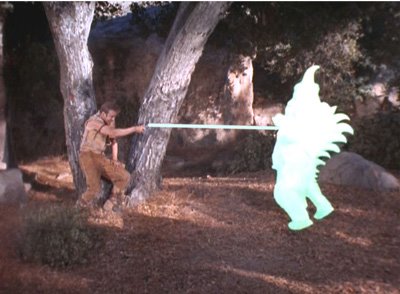1.6 : The Man Trap.
The 6th episode made, but usually the first shown, because of it's more typical Sci-Fi 'Monster of the Week' storyline satisfied the TV executives who didn't understand Star Trek. If every epiosde had been like this it would have been a completely different series.
Shatner really does scream well in this! A reviewer dubbed him 'the male Fay Wray'.
When McCoy does the autopsy, the dead man has a heartbeat!
Communicators must be pretty new equipment, no one seems to be able to flip them open. Kirk opens his up manually.
Tricorders must be new too, even though McCoy has one, Kirk wants to return to the ship to use it's infra-red sensors to scan for life-signs. These are the same sensors that cannot detect the crewmens bodies lying nearby.
The 6th episode made, but usually the first shown, because of it's more typical Sci-Fi 'Monster of the Week' storyline satisfied the TV executives who didn't understand Star Trek. If every epiosde had been like this it would have been a completely different series.
Shatner really does scream well in this! A reviewer dubbed him 'the male Fay Wray'.
When McCoy does the autopsy, the dead man has a heartbeat!
Communicators must be pretty new equipment, no one seems to be able to flip them open. Kirk opens his up manually.
Tricorders must be new too, even though McCoy has one, Kirk wants to return to the ship to use it's infra-red sensors to scan for life-signs. These are the same sensors that cannot detect the crewmens bodies lying nearby.


